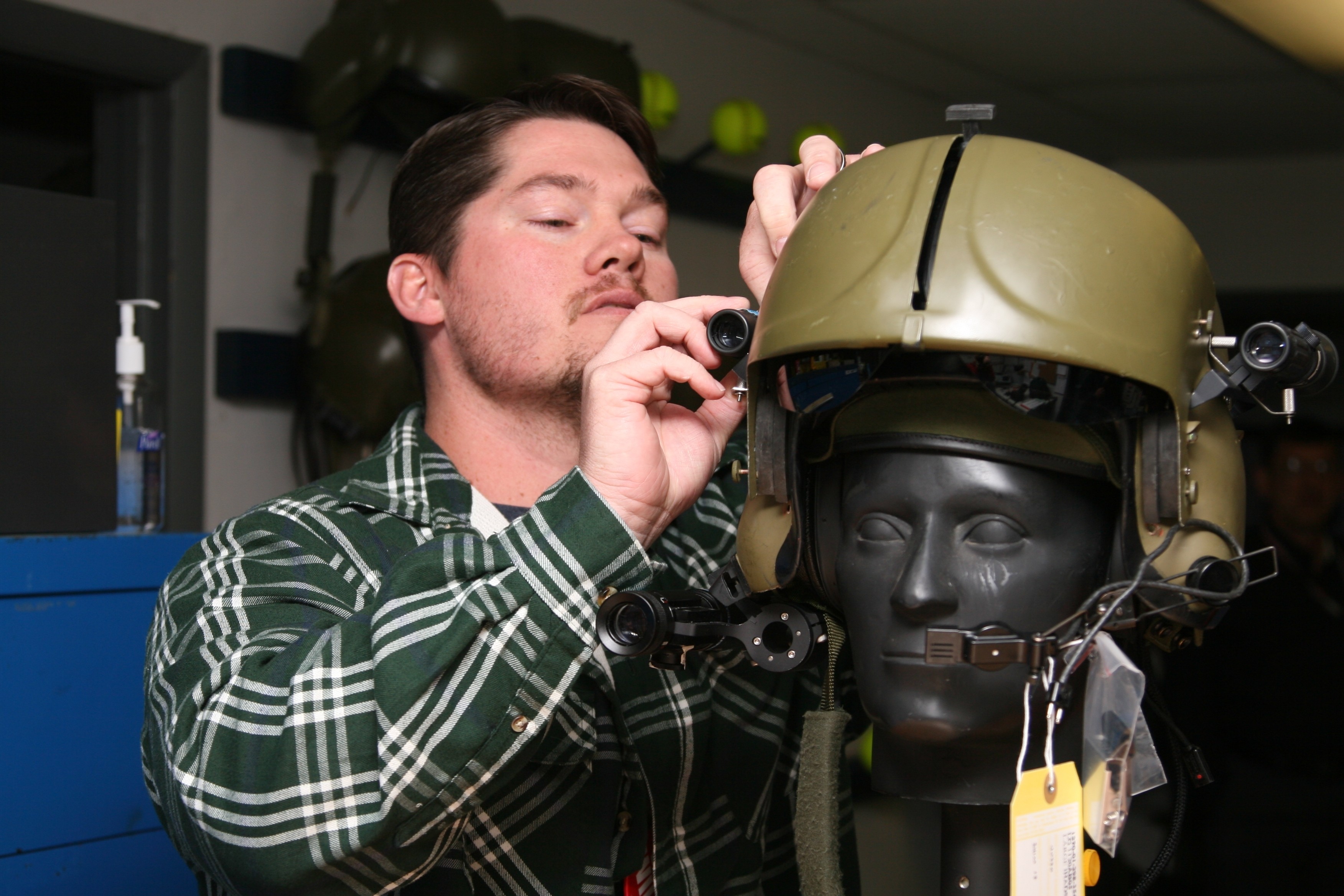It has often been said that great things come in small packages but the Army Fleet Support team at Hanchey Army Heliport's Aviation Life Support Equipment shop may understand the saying a little better than most.
Recently, the Hanchey ALSE team solved a serious problem involving the Integrated Helmet and Display Sighting System (IHADSS). The IHADSS is a helmet system that incorporates helicopter instrumentation, symbology and targeting information onto a monocle that AH-64 Apache pilots use when flying. The helmet is fitted with a set of sights that transmit the information onto the pilot's monocle.
More than one year ago, the Hanchey ALSE technicians started noticing a consistent problem with the sight alignment on the large size IHADSS.
"There have been some changes made to the (helmet) shell and, for some reason, those threw off the alignment of the IHADSS helmet," ALSE Technician Steve Pry said. "If the alignment is off more than three degrees, the helmet won't work properly."
Pry said every time his team tried to line everything up on the helmets, the alignment was always "off the charts" to the left.
"We put all the helmets through the alignment checks and that's when we started seeing a pattern," Pry said. "The problem was, if pilots thought they were looking straight and the sensors said they were looking straight, they were actually looking off to the left."
Because of the alignment problem, Hanchey had 30 unserviceable helmets.
Lt. Col. John Lindsay, 1st Battalion, 14th Aviation Regiment commander, said the helmet shortage presented a significant challenge for Apache student-pilots.
"We had zero helmets in reserve," Lindsay said. "We were graduating a class of 16 students and, as they were going out the door, they were taking their helmets and giving them to the class that was starting that day."
Pry, along with Hanchey ALSE supervisor Russ Hazelton and ALSE technicians Teddy Rodriguez and Tony Knowles, knew they had to do something to fix the alignment on the IHADSS so students could start using the helmets again.
Pry said four to six months worth of conversations and experimentation both at the shop and at their homes finally led the team to the fix they desperately needed - a sliver of aluminum barely thicker than a few pieces of paper.
"It was trial and error," Hazelton said. "We just kept moving and adjusting and sliding things around and, pretty soon, we started to see what the magic number was going to be."
The aluminum shim, as the AFS team that created it calls it, was crafted at the AFS Aviation Maintenance Support Shop and approved by U.S. Army TACOM Life Cycle Management Command. The shim fits between the scope and the helmet shell on the IHADSS and "kicks the rear out just enough to bring the two scopes back into parallel alignment," according to Hazelton.
"The shim just allowed everything to be brought back together," Pry said.
Hazelton said he was very proud of the way the Hanchey team was able to solve the IHADSS alignment problem.
"These guys were thinking outside the box and that's what I think is really cool," he said.
Today, one wall in Hanchey's ALSE shop is packed with large size helmets - a sight unseen for almost a year-and-a-half.
"We've really expanded our inventory of usable helmets," Hazelton said.
Pry said production of the shim was truly a team effort and it couldn't have been done without the help of his fellow technicians and the machinists in the AFS Aviation Maintenance Support Shop.
"Everyone had a part in this (project)," he said.
Lindsay said the ALSE team's ability to understand and correct the helmet problem was do in large part to the fact that the number of IHADSS managed and maintained at Hanchey is larger than any other place in the world.
"You are not going to find a greater concentration of IHADSS expertise than you are going to find at Hanchey," he said. "If we didn't have the numbers of students and the numbers of helmets we have, we probably wouldn't have recognized the problem and I am sure we wouldn't have gone through the effort of developing this shim that has saved us so many helmets. It took the large numbers and the expertise we have on hand here to get the job done."




Social Sharing